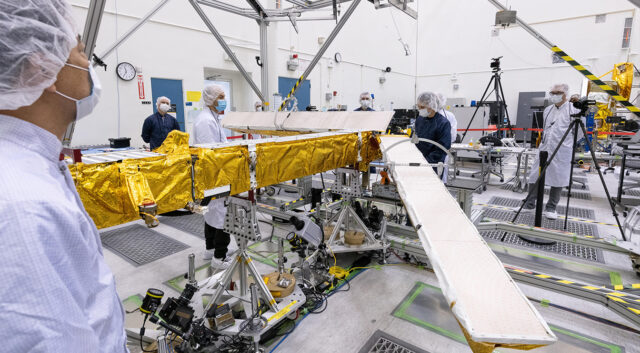
NASA’s New SWOT Satellite Will Survey Global Water Levels With Unprecedented Accuracy
Satellite launches have ramped up to an unprecedented rate, with advanced rockets like the deploying as many as 60 per launch. The latest Falcon 9 launch from Vandenberg Space Force Base, which has been rescheduled for Friday, will carry a special satellite, and it’s one-of-a-kind — NASA’s Surface Water and Ocean Topography (SWOT) satellite. This mission will use enormous radar antennas to make the most accurate measurements ever of water levels on Earth’s surface. It took years to get here and required the development of a new type of scanning instrument called the Ka-band Radar Interferometer (KaRIn).
SWOT is a cooperation between NASA and the French space agency Centre National d’Études Spatiales (CNES), with additional help from the Canadian Space Agency (CSA) and the UK Space Agency.
Currently, gathering precise height data from bodies of water requires deploying sensors at surface level. With enough individual sensors, it’s possible to extrapolate data about the entire body. KaRIn, which operates in a wavelength close to microwaves, will be able to measure water levels at centimeter scales across wide swaths, detecting features like currents and eddies that are less than 13 miles (20 kilometers) across. That’s .

JPL workers test KaRIn booms prior to launch. Credit: NASA/JPL
The KaRIn designers accomplished this feat with a pair of antennas, each at the end of a 33-foot (10-meter) boom that will deploy in orbit. The two Ka-band antennas will focus on the same region, covering 30 miles (50 kilometers) on either side of the satellite’s path. The signals won’t return at the same time, but this phase difference is vital in measuring water levels. Since the team knows the distance between the antennas and the radar wavelength, adding the phase difference allows them to calculate the height of the water.
However, for that to work, SWOT needs accurate orientation data, which it gets via a high-performance gyroscope. The satellite also needs high transmission power, about 1.5 kilowatts per pulse, to bounce signals off the water from 553 miles (890 kilometers) above. Engineers had to devise a robust power system with components that could accommodate such high voltage.
Overcoming all these challenges took nearly 20 years, but the team hopes that data from SWOT will help improve understanding of ocean currents, weather forecasting, and climate change models.
Now read: